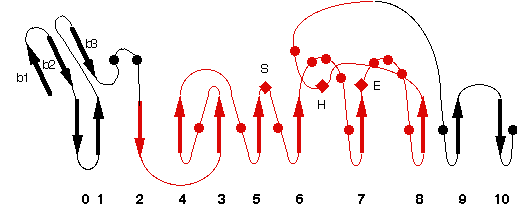6T9P
Name : Structure of human butyrylcholinesterase in complex with R enantiomer of oxime III, methylimidazole derivative of 2-hydroxyimino-N-(azidophenylpropyl)acetamide
Revelation date : 15-Jul-2020
Family : BCHE
Gene_locus : human-BCHE
PDB file : ESTHER: header of PDB entry RCSB: Full entry
Comment
Nikola Marakovic, Anamarija Knezevic, Igor Roncevic, Xavier Brazzolotto4, Zrinka Kovarik and Goran Sinko
Ligand :
References (1)
| Title : Enantioseparation, in vitro testing, and structural characterization of triple-binding reactivators of organophosphate-inhibited cholinesterases - Marakovic_2020_Biochem.J_477_2771 |
| Author(s) : Marakovic N , Knezevic A , Roncevic I , Brazzolotto X , Kovarik Z , Sinko G |
| Ref : Biochemical Journal , 477 :2771 , 2020 |
| Abstract : Marakovic_2020_Biochem.J_477_2771 |
| ESTHER : Marakovic_2020_Biochem.J_477_2771 |
| PubMedSearch : Marakovic_2020_Biochem.J_477_2771 |
| PubMedID: 32639532 |
| Gene_locus related to this paper: human-BCHE |
Representative scheme of Prolylcarboxypeptidase structure and an image from PDBsum server

